 |
|
|
NON-FICTION |
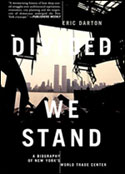 |
Divided We Stand: A Biography of New York’s
World Trade Center
Basic Books, 1999
Published two years before the destruction of the twin towers, this bestselling cultural history, now widely considered prescient, traces the development of Lower Manhattan from colonial times to advent of the WTC.
“Eric Darton’s Divided We Stand is a model not only of
writing but of citizenship. It fuses analytical brilliance with personal
feeling. Darton knows and shows where the bodies are buried, but he
never lets his anger poison his underlying love. He shows us how to
confront all that has been done to our town, and how to live through
it and lay claim to the city as our own.”
—Marshall Berman, author of All That Is Solid Melts Into Air
|
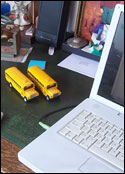 |
Born Witness
Scroll of Wonders
Two free, downloadable, nonfiction narratives of the extraordinary times we are living through. |
FICTION |
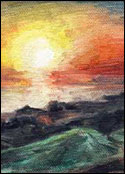
|
Orogene
A novel of Utopia as seen through a painter's eye
“It doesn’t happen often—maybe once in a few decades—that a literary work changes the landscape, showing the world that there’s a new way to write, a new way to read and think. Faulkner’s The Sound and the Fury might be an example. Other possible candidates: Pynchon’s Crying of Lot 49, Nabokov’s Lolita.
Eric Darton’s novel Orogene is in this very select league: an amazing fusion of poetry, fun, nightmare, and meditation on the human condition.
It is reported that the Soviet editor Tvardovsky, when the manuscript of One Day in the Life of Ivan Denisovich, by an ex-convict named Solzhenitsyn, was placed in his hands and he began to read, stopped, got up, put on his finest clothes before returning to the novel. As I read Orogene, I thought often of Tvardovsky: the rare privilege of getting to turn the pages of a masterpiece before it enters the world in print.
What I told Darton was pretty much what Tvardovsky told Solzhenitsyn: ‘You have written a marvelous thing.’”
—Michael Kandel, editor (for Harcourt) of Ursula K. Le Guin and Jonathan Lethem and translator of Stanislaw Lem
|
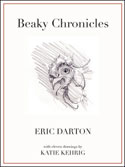
|
Beaky Chronicles
A time-traveling saga of friendship and manipulation told in a cycle of twelve animal fables. Featuring original illustrations by Katie Kehrig
Click to hear an excerpt
|
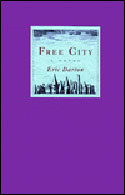 |
Free City, a novel
W.W. Norton, 1996
Click to hear an excerpt
“Darton’s seductive fable is a stylistic tour de force, a dazzling parable about the birth of the modern age with its terrors and promise....this debut novel is reminiscent of Italo Calvino’s work in its dashing mingling of history and fantasy.”
—Publishers Weekly
“Darton’s Free City warns of something so evident that it is difficult
to see: if the foundations of a ‘free city’ - a society - are undermined,
it can be lead to ruin. This tricky, delirious fable for our times
- fraught with profound and uncertain change, in which the alliance
between unimpeded technology and capitalism drags us blind into
the new millennium - carries a strong moral and political load.
But Darton’s narrative refuses pessimism, arguing that collective
freedom is capable of defending itself with the magic fluid of a
mind truly free and sovereign.”
—Roberto Saladrigas, La Vanguardia, Barcelona
|
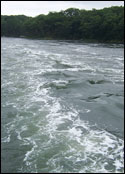 |
Essays, Tales & Sounds
• A selection of critical writings from the utopian to the ridiculous.
• Several short and novella-lengh fictions.
• A sampler of music and spoken words recordings made once upon a time in the innocent ’80s. |
ANTHOLOGIES
|
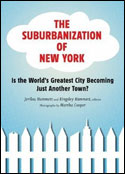 |
The Suburbanization of New York:
Is the World's Greatest City Becoming Just Another Town?
Edited by Jerilou Hammett and Kingsley Hammett, with photographs by Martha Cooper. Princeton Architectural Press, 2007
“Only two things are sure: New York is in rapid motion, and this book is a great guide to where it might be headed. Its diverse array of observations-written by some of the country’s smartest (and wittiest) analysts and activists-are incisive and accessible, provocative and entertaining, perfect for an urban studies course and for anyone interested in pondering the past and future of cities.” —Mike Wallace, Pulitzer Prize-winning co-author of Gotham: A History of New York City to 1898
|
| |
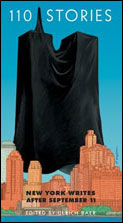 |
110 Stories: New York Writes After September 11
Edited by Ulrich Baer. New York University Press, 2002
“Drawing on the enormous resources of New York's literary community,
110 Stories: New York Writes After September 11 is a surprisingly
supple commemoration of disaster. Short-short stories and poems
by New York writers are the collection's raison d'Ítre.... Overall,
this collection proves the transformative power of art.”
—Publishers Weekly |
| |
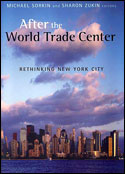 |
After the World Trade Center: Rethinking New York City
Edited by Michael Sorkin and Sharon Zukin. Routledge, 2002
“Amid the flood of glossy picture books memorializing September
11 comes a rare collection of essays on the fallen World Trade Towers.
Written by social critics and urbanists, the essays provide a multidimensional
portrait of the towers and New York in the aftermath of September
11. The Lower Manhattan site is presented as a complex, contested
landscape rich in historical, social, and political context.... Global
and local in outlook, reaching beyond the personal-tragedy, American-values
perspective that has dominated the media, this thoughtful volume
is not just for New Yorkers.”
—Philip Herbst, Booklist |
home • books & publications • essays, tales & sounds • web appearances & links • bio • wtc: a living archive • contact |
|
| |
|
